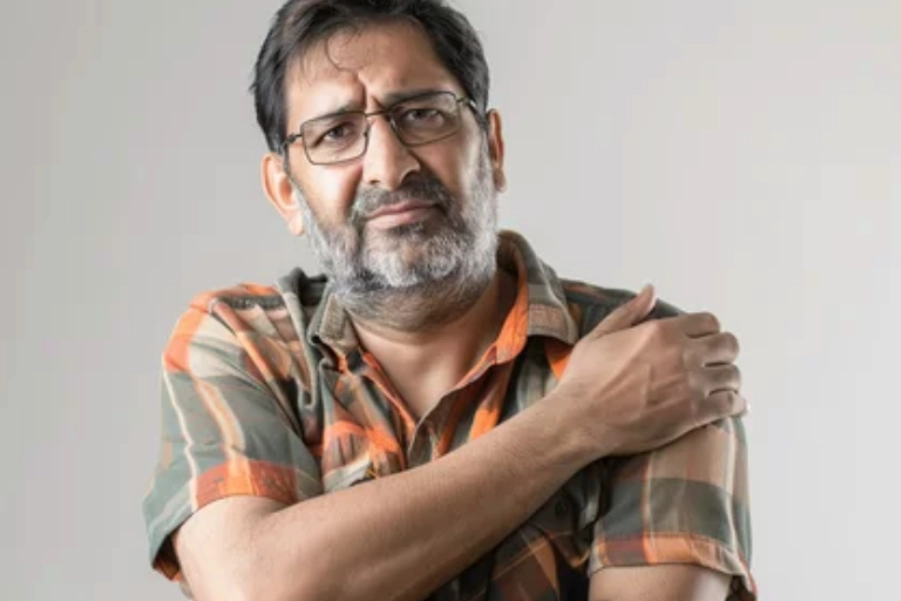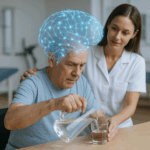Physiotherapy Treatment Protocol for Acute Onset of Adhesive Capsulitis
Overview of Conditions:
Adhesive capsulitis, also known as frozen shoulder, is a painful and restrictive condition characterized by inflammation and progressive fibrosis of the shoulder joint capsule. This condition typically presents in three stages:
- Freezing Stage (painful phase): Severe pain with movement and loss of ROM due to inflammation and thickening of the capsule.
- Frozen Stage (adhesive phase): Stiffness and significant loss of ROM.
- Thawing Stage (recovery phase): Gradual return of ROM and pain relief.
In the acute (freezing) phase, the patient experiences severe pain with movement and restricted ROM, particularly in external rotation, abduction, and flexion.
Etiology:
- Idiopathic: The cause of adhesive capsulitis is often unknown.
- Secondary Causes: May be associated with diabetes, thyroid disorders, stroke, or trauma (e.g., rotator cuff tears).
- Inflammation: Inflammation of the synovial lining leads to thickening and fibrosis of the shoulder capsule, restricting movement.
Assessment and Evaluation:
- History:
- Pain Onset: Gradual increase in pain, starting dull and progressing to sharp, especially with motion.
- Mechanism of Injury: History of trauma, surgery, or immobilization could trigger the condition.
- Functional Limitations: Difficulty performing ADLs such as dressing, reaching, and lifting.
- Pain Assessment:
- VAS or NPRS: Assess pain severity, which worsens at night or during movement, particularly overhead activities.
- Pain Pattern: Pain felt at the anterior or lateral shoulder, increasing with motion.
- Physical Examination:
- Postural Assessment: Look for shoulder guarding or altered posture.
- Range of Motion (ROM): Significant loss of both active and passive ROM, particularly in external rotation, abduction, and flexion.
- Strength Testing: Weakness due to pain inhibition, not muscle atrophy.
- Special Tests:
- Glenohumeral Joint Passive ROM: Assess for capsular tightness.
- Painful Arc Test: Pain between 60°-120° of abduction during the freezing stage.
Goal Setting:
- Short-Term Goals:
- Reduce pain and inflammation (VAS ≤ 3).
- Minimize muscle spasm and guarding.
- Improve passive ROM.
- Reduce functional limitations in ADLs.
- Long-Term Goals:
- Restore full passive and active ROM, particularly in external rotation and abduction.
- Strengthen shoulder stabilizing muscles to prevent recurrence of stiffness.
- Improve functional capacity for overhead movements and lifting.
- Prevent progression to the frozen stage by addressing inflammation and maintaining joint mobility.
Recommended Treatment:
Electrotherapy:
- Transcutaneous Electrical Nerve Stimulation (TENS):
- Indication: Pain relief and reduction of muscle spasm.
- Parameters:
- Frequency: 80-120 Hz for pain relief.
- Intensity: Comfortable, sub-threshold for pain.
- Pulse Width: 100-300 µs.
- Duration: 20-30 minutes, 2-3 times per day.
- Mechanism: Blocks pain signals and reduces muscle spasms.
- Interferential Therapy (IFT):
- Indication: Deep pain relief and muscle relaxation.
- Parameters:
- Frequency: 4,000 Hz carrier frequency modulated at 80-150 Hz.
- Duration: 20-30 minutes.
- Mechanism: Promotes circulation, reduces muscle spasm, and aids in soft tissue healing.
- Class 4 LASER Therapy:
- Indication: Tissue healing and inflammation reduction.
- Parameters:
- Wavelength: 800-900 nm.
- Power: 5-10 W.
- Duration: 5-8 minutes per treatment area.
- Mechanism: Enhances cellular metabolism, collagen synthesis, and reduces inflammation.
- Ultrasound Therapy:
- Indication: Reduces inflammation and promotes tissue healing.
- Parameters:
- Frequency: 1 MHz.
- Intensity: 0.5-1.0 W/cm².
- Duration: 5-10 minutes per area.
- Mechanism: Increases blood flow, decreases muscle spasms, and accelerates collagen synthesis.
Thermotherapy:
- Moist Heat Packs:
- Indication: Decreases muscle spasm and increases tissue extensibility.
- Application: Apply heat for 15-20 minutes before stretching.
- Mechanism: Heat promotes circulation and tissue extensibility, aiding in joint mobilizations and stretching.
Manual Therapy:
- Joint Mobilization (Grade I-II):
- Indication: Alleviate pain and reduce stiffness.
- Technique: Gentle, oscillatory mobilizations at the glenohumeral joint.
- Mechanism: Improves synovial fluid movement and reduces stiffness.
- Myofascial Release:
- Indication: Relieve muscle tightness and pain, especially in the deltoid and upper trapezius.
- Technique: Sustained pressure on tight muscles to release fascial adhesions.
- Mechanism: Increases tissue extensibility, reduces muscle guarding, and improves mobility.
Exercise Therapy:
- Range of Motion (ROM) Exercises:
- Exercise: Passive ROM exercises to prevent stiffness (e.g., pendulum swings, assisted shoulder flexion, abduction).
- Duration: 3-5 repetitions, 3-4 times per day.
- Mechanism: Prevents contractures and adhesions, helping maintain functional mobility.
- Isometric Strengthening:
- Exercise: Isometric exercises to strengthen the rotator cuff and scapular stabilizers.
- Duration: Hold each contraction for 5-10 seconds, 5-10 repetitions, 2-3 times per day.
- Mechanism: Helps maintain muscle tone and reduces muscle atrophy during the acute phase.
Precautions:
- Electrotherapy: Avoid over the heart, carotid sinus, or open wounds. Use caution in patients with pacemakers or implanted electronic devices.
- Thermotherapy: Avoid heat application within the first 48 hours post-injury to avoid exacerbating inflammation. Ensure safe temperatures to avoid burns.
- Manual Therapy: Use only gentle, low-grade mobilizations during the acute phase. Avoid aggressive techniques.
- Exercise Therapy: Avoid aggressive stretching or strengthening exercises during the acute phase. Progress gradually from passive ROM to active ROM as tolerated.
Reassessment and Criteria for Progression/Change in Care Plan:
- Pain Reduction: Reassess if pain persists after 4-6 weeks. If VAS is still high, consider corticosteroid injections or imaging.
- ROM Improvement: Monitor for passive ROM improvement. Consider more aggressive interventions if no improvement after 4-6 weeks.
- Strength Progression: Strengthening should progress once pain is controlled. If no improvement after 6 weeks, reassess or refer for additional interventions.
- Functional Improvement: Track progress in ADLs. Slow functional recovery may require reassessment or referral to a specialist.
Disclaimer:
Treatment options must be chosen wisely and appropriately. For example, where multiple options are recommended, any one option can be selected based on availability and appropriateness, such as in electrotherapy. Always consult a qualified healthcare provider before beginning any treatment protocol.
This content is for informational purposes only and should not replace professional medical advice.






